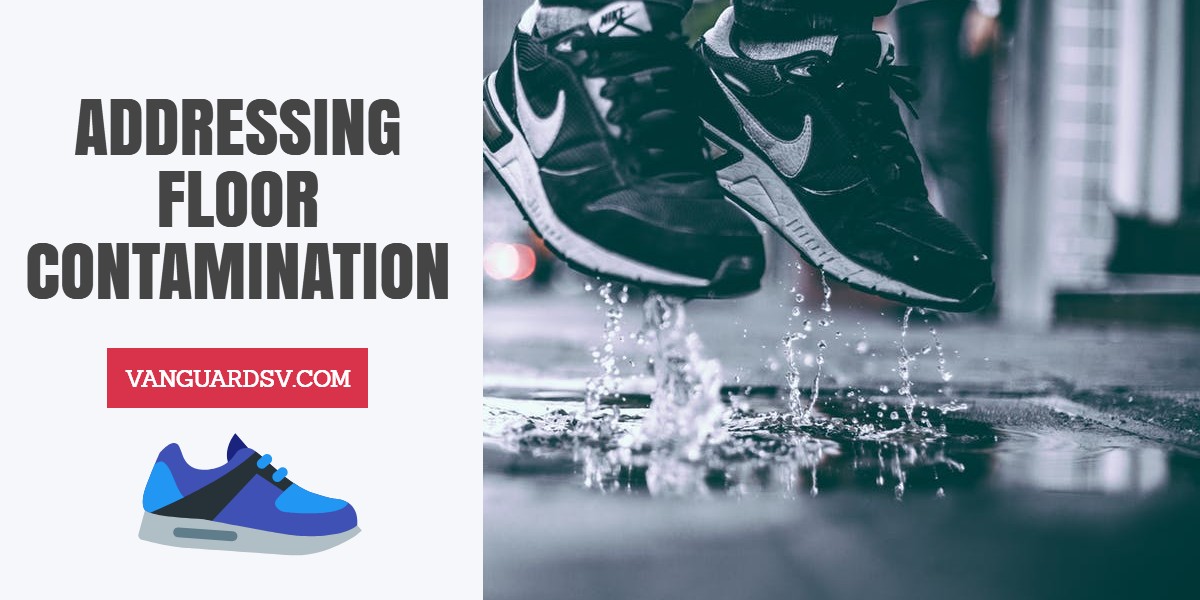Proper floor care can eliminate a significant volume of germs and bacteria brought into a facility on the soles of occupant's feet, or via wheels from bicycles or carts.

Improving Infection Control Through Proper Floor Care
Recent research has shown that a large portion of the germs and bacteria contaminating a facility are trafficked in on the soles of shoes, as well as wheels from bikes, carts, and wheelchairs.
Recent research is suggesting that floors can be a source of contamination and may result in the spread of germs.
According to reports on Infection Control Today, despite daily cleaning, bacterial and viral contamination can transfer from shoes to floors and spread quickly throughout a facility.
Further research determined that high trafficked areas of the floor were significantly more contaminated than areas with little to no foot traffic, and that the type of shoe, including shoe covers, had no impact on the reduction or increase on the levels of contamination.
The contamination of a floor due to walking was about 16 times higher than contamination of the floor due to sedimentation only, measured with impression plates. No significant difference in floor contamination could be seen with different footwear (ordinary shoes, clean shoes, shoe covers).
Even with the best of floor disinfection procedures, contamination on heavily trafficked walkways typically returned in approximately one hour, contributing to two major concerns for any facility manager--surface cross-contamination to objects touching the floor, and germs and bacteria being knocked up into the air.
The Cross-Contamination Concern
A 2017 study of several medical facilities found that objects that were in contact with the floor were subject to cross-contamination, ultimately leading to contamination of occupant's hands, clothing, and other equipment.
Deshpande, et al. (2017) made a strong argument for a new focus on floors with their survey of five hospitals.
They found that floors in patient rooms were frequently contaminated with pathogens and high-touch objects such as blood pressure cuffs and call buttons were often in contact with the floor.
Contact with objects on floors frequently resulted in transfer of pathogens to hands.
Of 100 occupied rooms surveyed, 41 percent had one or more high-touch objects in contact with the floor.
These included personal items, medical devices, and supplies. MRSA, VRE and C. difficile were recovered from 6 (18 percent), 2 (6 percent), and 1 (3 percent), respectively of bare or gloved hands that handled the items.
Additionally;
From the floor, it is plausible that air currents, human movements over the floor and other factors that aerosolize or provide an airborne opportunity for the organism may occur, thus causing human infections via inhalation, horizontal or cross-contamination from other persons, clothing or equipment that the organism resettles upon.
Combating Floor Contamination
There are several recommended methods for tackling the dangerous levels of floor contamination present on the floors of hospitals, daycares, long-term care facilities, and schools.
- Remove wet and dry soil every day by vacuuming and wet/dry mopping.
- Scrub the floors regularly, especially high traffic areas or critical areas of your facility where food is stored, or where children or other vulnerable demographics periodically occupy.
- Implement walkway matting to capture dirt, bacteria, and germs, and contamination control flooring/matting in healthcare facilities.
References & Resources
Takeaway
Floor cleanliness and contamination is a long overlooked avenue of primary germ and bacterial introduction into facilities across the U.S.
80% of all contamination enters a critical environment at floor level on feet or wheels
Therefore, controlling contamination and cross-contamination at or near floor level is an essential and fundamental part of protecting your critical environment from particulates.
Herculean efforts to scrub and disinfect the floors have proven futile, often leading to full recontamination within the hour.
The single best method is to introduce a combination of contamination control walkway mats and daily standard floor maintenance--applying high-level cleaning and disinfection procedures as needed.
The cost of the equipment, staff, and training necessary to maintain a healthy working, learning, and healthcare environment in-house is proving to be more and more burdensome every year, often at the cost of a safe and clean, high-performance facility.
If you would like to learn more about how high-quality floor care and disinfection methods can improve infection control procedures in your facility--contact us today for a free quote!
In Bakersfield CA, call (661) 437-3253
In Fresno CA, call (559) 206-1059
In Valencia CA, or Santa Clarita CA, call (661) 437-3253

